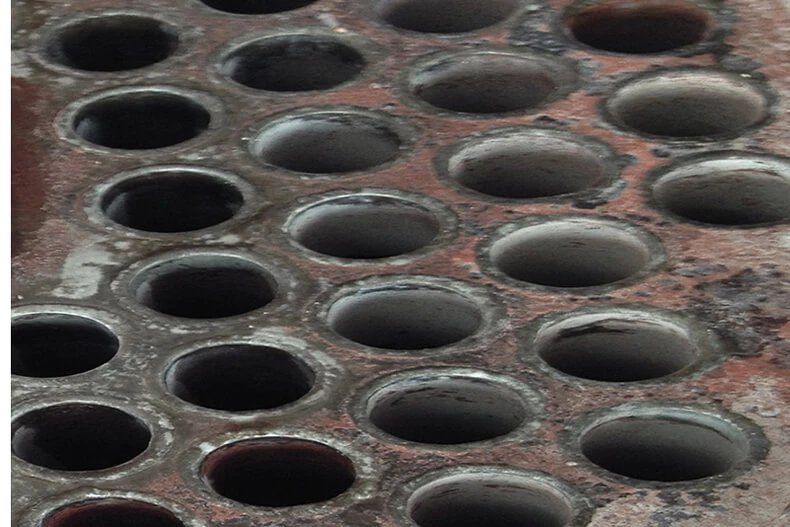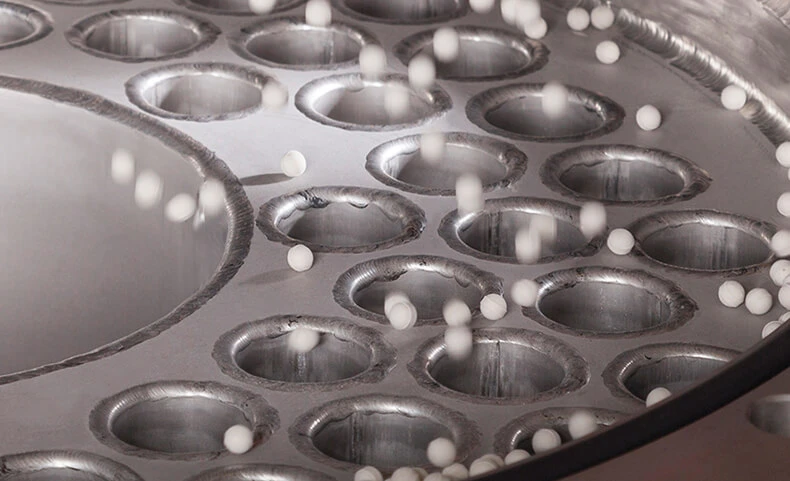Contact us
Brock Alloy Wheels GmbH is one of the leading manufacturers of alloy wheels and aluminium rims. The company opened a new subsidiary, Jajce Alloy Wheels, in Bosnia-Herzegovina at the start of 2017. Like its parent company, this new production site stays true to the principles of making environmental protection and safety top priorities during its manufacturing processes. The latest surface treatment technology allows Jajce Alloy Wheels to perform chromium-free pre-treatment while at the same time meeting the high standards expected by car manufacturers. On top of this, its entire production area is supplied with recycled water by a dedicated VACUDEST wastewater treatment system provided by H2O GmbH of Steinen, Germany. This makes the entire production process wastewater-free, ensuring that Brock Alloy Wheels GmbH plays an important role in protecting the environment and conserving our ever decreasing fresh water resources.
The rinsing wastewater from complex coating pre-treatment systems like those used by Brock Alloy Wheels GmbH contains a variety of heavy metal pollutants. Due to the range of different compositions the industrial wastewater can take, it is a highly demanding medium for the treatment system to process. Nevertheless, H2O GmbH was able to solve the problem by installing a vacuum distillation water treatment system comprising a sophisticated water channelling system, a patented Clearcat VACUDEST unit and a number of defined post-treatment steps. Thanks to this sustainable treatment process, Brock Alloy Wheels GmbH can now channel three types of wastewater with different levels of pollution – from degreasing, pickling and phosphating – back into its production process once they have undergone sustainable wastewater treatment.
Before metallic surfaces can be treated, they first need to be degreased. The metal parts are exposed to acidic or alkaline chemicals in order to remove any organic impurities, either through submersion or by spraying. Establishing the correct balance between parameters such as temperature, concentration of the degreasing chemicals and submersion time or spray pressure is essential to ensuring optimum results. The oily and greasy wastewater from this process is processed by a special VACUDEST system. The Clearcat technology built into this system creates an oil-free, grease-free distillate of such high quality that it can be channelled back into the downstream rinsing units for the degreasing process – a highly effective recycling system.
While degreasing removes impurities that have settled on the metal surface, pickling eliminates those from inside the metal surface itself. Pickling can be used to remove impurities such as metal oxides. The use of pickling agents, particularly those that contain fluorides, presents an enormous challenge when it comes to treating the resulting wastewater. As such, it is especially important when designing the VACUDEST system to ensure that the pH value is set correctly, a suitable stainless steel material is used and that the input and output concentrations of the fluorides are controlled.
Parts stripped off the metal layer can lead to high sludge loads in these ‘active baths’, which can in turn cause an unwanted film to form on conventional evaporator systems. The Activepowerclean technology in the VACUDEST removes sludge and films during distillation, thus allowing for an optimum transfer of heat that also improves the evaporator’s performance. Even increased sludge loads resulting from neutralisation are no problem. If the pollution levels in the ‘active baths’ are too high, they can also be channelled to the VACUDEST evaporator in controlled doses.

Conventional heat exchangers get dirty quickly, leading to lower performance and higher consumption.

An Activepowerclean heat exchanger stays clean thanks to the circulating ceramic balls.
During conversion, or phosphating, an extra layer is applied to the metal surface to improve the corrosion resistance of the metal parts. At the same time, this layer also ensures that the metal surface and the paint coating combine well when the paint is applied later on. Older conversion layers were often composed of chromium (IV) compounds but, due to their carcinogenic effects, it is now increasingly common to see these replaced with other components. Brock Alloy Wheels GmbH sets great stock in environmental awareness during production, and thus completely avoids the use of all chromium (IV) compounds. Since the concentration of the conversion or passivation agent used during the process is usually very low, it makes sense to treat this with VACUDEST as well, as this can drastically reduce disposal costs.
In order to keep operational methods as effective as possible when using vacuum distillation treatment, an understanding of the ingredients and the loads generated by non-vaporisable substances is essential. The lower the process water load, the longer a distillation cycle can take, which in turn leads to lower operational and disposal costs.
As mentioned above, complex coating pre-treatment processes can generate water with differing levels of pollution. Degreasing and pickling baths usually generate heavily polluted process wastewater. It would be inefficient to use a VACUDEST system to treat this wastewater alone. Conversion baths and all rinsing baths, on the other hand, have much lower pollution levels, which makes them ideal for treatment using vacuum distillation. If the customer wants the heavily polluted degreasing and pickling baths to be included in the treatment anyway, these can be collected separately and added to the flow of less heavily polluted process water in controlled doses. This allows the customer to make a conscious decision with regard to the composition of the process water that is channelled into the VACUDEST system, resulting in a more continuous – and thus more energy-efficient – distillation process. In order to calculate the optimum process water composition, the individual active baths and rinsing units can be investigated in H2O GmbH’s in-house laboratory. The analysis results for the non-vaporisable substances and a number of other relevant parameters are used as the basis for designing and controlling the VACUDEST peripherals, which allow us to determine the perfect mixture for vacuum distillation.
In order to keep the customer’s water budget cost-efficient and environmentally friendly, the distillate generated during vacuum distillation can be channelled back into the coating pre-treatment process. Of course, this can only be done if the water meets certain quality requirements. These requirements differ for each treatment or rinsing basin, and are usually set by the suppliers of the degreasing, pickling and conversion agents. The most important parameter is conductivity. If the distillate generated during the vacuum distillation process does not meet the necessary conductivity requirements, it can be fed through an ion exchanger before it is channelled back into production in order to significantly reduce its conductivity. Since the quality requirements differ from one treatment or rinsing basin to the next, the route used to channel the wastewater back into the production process can be modified accordingly. This flexibility is one of the main features that attracted Brock Alloy Wheels GmbH to H2O GmbH’s solution. It makes it easy for the company to respond to changes in its coating pre-treatment process without impairing the quality and effectiveness of its water budget.
You have questions on our VACUDEST systems?
Kindly contact us!
Your contact is:
Thomas Dotterweich
Senior Sales Engineer
+49 7627 9239-306
thomasm.dotterweich@h2o-de.com
You need consumables, spare parts or a maintenance date?
We will be pleased to assist you!
Your contact is:
Carles Fité
Technical Customer Support
+49 7627 9239-888
carles.fite@h2o-de.com
You want to be part of our team and create the wastewater-free future with us?
We will tell you how!
Your contact is:
Bettina Böhringer
Human Resources
+49 7627 9239-201
career@h2o-de.com